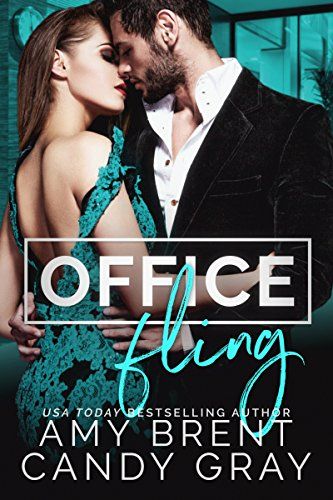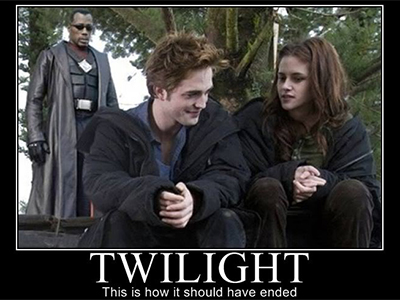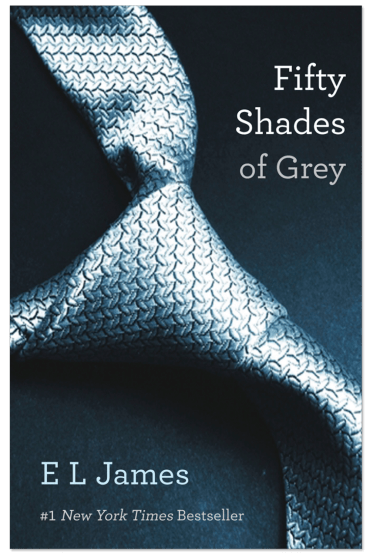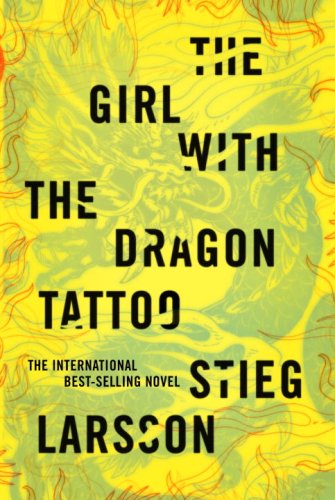As is my custom, and habit, and my Bobby Brown prerogative, I’m going to go with the first page — as printed.
You know, printed with ink at these places we used to call “stores full of books,” where you handed the nice folks who live there paper decorated with dead presidents and they let you walk out with ALL KINDS OF YUMMY BOOKS.
So if you read the first page of this thing on a Kindle or iPad or Atari 2600, your page 1 will doubtless look different and such. Please give my regards to the Complaint Department.
After a line edit of Page 1, we’ll talk about our general literary impressions — about how metaphors are like similes, only different; about how my hatred of semi-colons runs deeper than my loathing of A-Rod; and how somebody wrote a mainstream and incredibly successful novel about sexy nonsense without putting any sort of sexy nonsense whatsoever on page 1.
Note: I’m striking out text, with any replaced text or notes in red, because my version of this novel would be called ONE SHADE OF RED after all the red ink we spill on this thing. Also, I don’t know what happened to this post. A friend wants to use it as an editing example, so I’ve resurrected it and updated the piece a little. Enjoy.
Also: If you have a famous novel with a brilliantly awful first page that needs serious red ink, send me your nomination.
FIFTY SHADES OF GREY
I scowl with frustration at myself in the mirror. (This may be a world record: bam, in the first sentence, she breaks a cardinal rule of fiction writing: don’t tell readers what the hero or heroine looks like by having them stare into a mirror, gaze upon their reflection in a pond or, I don’t know, whip out their driver’s license and say, “Huh, five-foot-ten, a hundred and twenty pounds, red hair, green eyes and a few freckles. Howbout that?” Ugh. This is not exactly “Call me Ishmael.”) Damn my hair – it just won’t behave, and damn Katherine Kavanagh for being ill and subjecting me to this ordeal. (Unless the heroine’s hair is crucial to the plot — unless she starts out with unruly hair in Act 1, switches to a bob in Act 2 and shows how much she’s grown and changed by rocking a purple Mohawk in Act 3, the hair, it is Boring, and a Distraction. Also, nobody refers to friends and such by their full name. If she’s your bestie, you say “Katherine.”) I should be studying for my final exams, which are next week, yet here I am trying to brush my hair into submission. I must not sleep with it wet. I must not sleep with it wet. (Enough already with the hair. Seriously. The only two words with any kind of real conflict and potential are “final exams,” and unless she flunks those, and therefore gets kicked out of university and has to live under a bridge in a cardboard box, it does not matter for the story.) Reciting this mantra several times, I attempt, once more, to bring it under control with the brush. (More about the hair? MORE? Not necessary, not interesting and not entertaining, unless her hair is secretly a sentient being, organizing a plot to take over the world, one follicle at a time. I’m guessing Bruce Willis, being immune from such attacks, will foil this plot.) I roll my eyes in exasperation and gaze at the pale, brown-haired girl with blue eyes too big for her face staring back at me, and give up. (Back to the staring-at-the-mirror trick, which has to go. Find another way to describe the heroine.) My only option is to restrain my wayward hair in a ponytail and hope that I look semi-presentable. (Now we’re beating the Dead Hair Horse on its way to the glue factory.)
Kate is my roommate, and she has chosen today of all days to succumb to the flu. Therefore, she cannot attend the interview she’d arranged to do, with some mega-industrialist tycoon I’ve never heard of, for the student newspaper. (Awkward. First reference is Katherine Kavanaugh and now she’s Kate — just call her Kate both times, and let’s clean this whole thing up. Also, how many student newspapers score interviews with “mega-industrial tycoons” … who you’ve never heard of? If they’re really mega, then you have herd of them. Bill Gates, Steve Jobs and so forth. If they you haven’t heard of them, they aren’t mega at all. Edited text follows in red.) Kate is my roommate and she’s chosen today, of all days, to succumb to the flu. That means I’m stuck interviewing some industrial tycoon for the student newspaper. So I have been volunteered. (Redundant.) I have final exams to cram for, (already said that) one essay to finish, and I’m supposed to be working this afternoon, but no – today I have to drive a hundred and sixty-five miles to downtown Seattle in order to meet the enigmatic CEO of Grey Enterprises Holdings Inc. As an exceptional entrepreneur and major benefactor of our university, his time is extraordinarily precious – much more precious than mine – but he has granted Kate an interview. A real coup, she tells me.
Damn her extracurricular activities. (The last sentences were brought to you by the letter E: enigmatic, exceptional entrepreneur, extraordinarily, extracurricular. There are other modifiers that start with the letter E: extraneous, excruciating and ejector seat. I am looking for the handle, because it’s time to pull it.)
Kate is huddled on the couch in the living room.
“Ana, I’m sorry. It took me nine months to get this interview. It will take another six to reschedule, and we’ll both have graduated by then. As the editor, I can’t blow this off. Please,” Kate begs me in her rasping, sore–throat (compound modifier) voice. How does she do it? Even ill
(end of page 1)
Editing notes
Are you kidding me? ARE YOU KIDDING ME?
So this the first bit of a novel that sold a gazillion copies and rocked the literary world. It starts with an extended riff about wet hair and ponytails, as the author tells us how the heroine looks by having her look in a flipping mirror, goes back to the hair, uses every adjective and adverb in her dictionary that starts with the letter E and sets up the incredibly high stakes of whether or not a college student can tame her unruly hair and cram for her finals when she is forced — FORCED — to drive to Seattle and interview some billionaire for her friend.
I thought THE FOUNTAINHEAD was a bad Page 1, but Ayn Rand is flipping Shakespeare compared to this first bit. Related: The Red Pen of Doom murders THE FOUNTAINHEAD by Ayn Rand
God bless anybody who sells a ton of books or movie tickets. I adore books and movies, and the more people read books, and see good movies, the better.
HOWEVER: the first page of a book is a lot like the trailer for a movie. You start out with your best stuff, and it’s a rock-solid guarantee that the writing doesn’t get magically better ten pages or 100 pages later. The first page, and the first chapter, get polished and polished until they are a shiny diamond made of words.
Maybe you could argue this book is the one exception to that rule. From the reviews of this book, though, that’s not the case.
Why did it sell so well?
I believe, deep in my soul, that packaging matters more than the product.
The title of a book — or a movie, or a TV show — can save your bacon or kill you dead.
The cover of a book, or poster for a movie, is the next most important thing, because it’s what people see when they decide what to buy in Barnes and Noble or what to see on Friday night at those giant buildings where popcorn costs $9 a bucket.
You can’t pitch quality.
If you gave this a more typical title for the genre, and a more typical book cover, you’d probably end up with a title like A BUSINESS AFFAIR and some kind of Ryan Gosling looking guy wearing a suit on the cover with the heroine nearby, messing with her ponytail while she wears the highest of high heels and a business suit with a skirt that is just this side of immodest. Or the cover would feature a blindfold and a pair of handcuffs. That sort of thing. You know, something like this:
See? Here we go. The cover above isn’t just a good representation of what I’m talking about. I bet it’s a far, far better book. If you gave FIFTY SHADES OF GREY a more normal title like this, and more typical cover, I would bet you my house, my car and my first-born son that the book would not sell like hotcakes and get turned into movies.
The unusual title and cover isn’t a side issue. I believe it’s the entire reason this book went viral.
True story: guess what the author of THE GIRL WITH THE DRAGON TATTOO wanted as a title for his novel? Go ahead. Guess.
Here’s the answer: MEN WHO HATE WOMEN.
Raise your hand if you think that title would have set the world on fire and led to hit movies.
The title and cover — the packaging — are 90 percent of the battle.
The packaging matters more than the product.
FIFTY SHADES OF GREY is an interesting, literary title. The cover photo of a grey tie is also atypical of the genre and really stands out. The combined effect gives the book a literary veneer.
Some people might feel embarrassed getting on Flight 435 to Frankfurt and pulling out a paperback with A BUSINESS AFFAIR on the cover with a blindfold and handcuffs on the cover. And you can bet the male audience for such books is hard to find with a microscope.
Give it the gloss of lit-rah-sure, though, and that makes it okay for some people to read what they might never do: romance and erotica.
And hey, I respect the hell out of romance authors. Have learned a ton from them. So I’m not talking smack about the genre here–I’m specifically talking smack about the first page of this specific book. There are far, far better examples of romance out there. Amazing writers. Go support them.
FIFTY SHADES reminds me of the early Eric van Lustbader novels, like THE NINJA, which I think were hot sellers because they slipped in naughty bits to readers — mostly men — who expected, I don’t know, ninjas sneaking around at night and fighting. It was like a James Bond movie where they didn’t fade out when 007 kissed the girl. I can tell you 14-year-old boys around the globe had their minds blown. You can print this kind of stuff without getting arrested? I can buy it at the store and they don’t ask for ID? NO WAY.
And let’s give respect where it’s due: there’s an editor somewhere who came up with this title, and a cover designer who thought up the idea, got the right photo and nailed it.
Open up that brilliant cover, though, and you eventually get to the first page, which is a hot mess. And from the reviews, it doesn’t get better on page 2 or 152.
VERDICT
I truly thought, deep in my soul, that you couldn’t top the first page of THE FOUNTAINHEAD for a famous novel that is famously bad. But yes, we have a new champion.
Ripley sums up my mood here.









